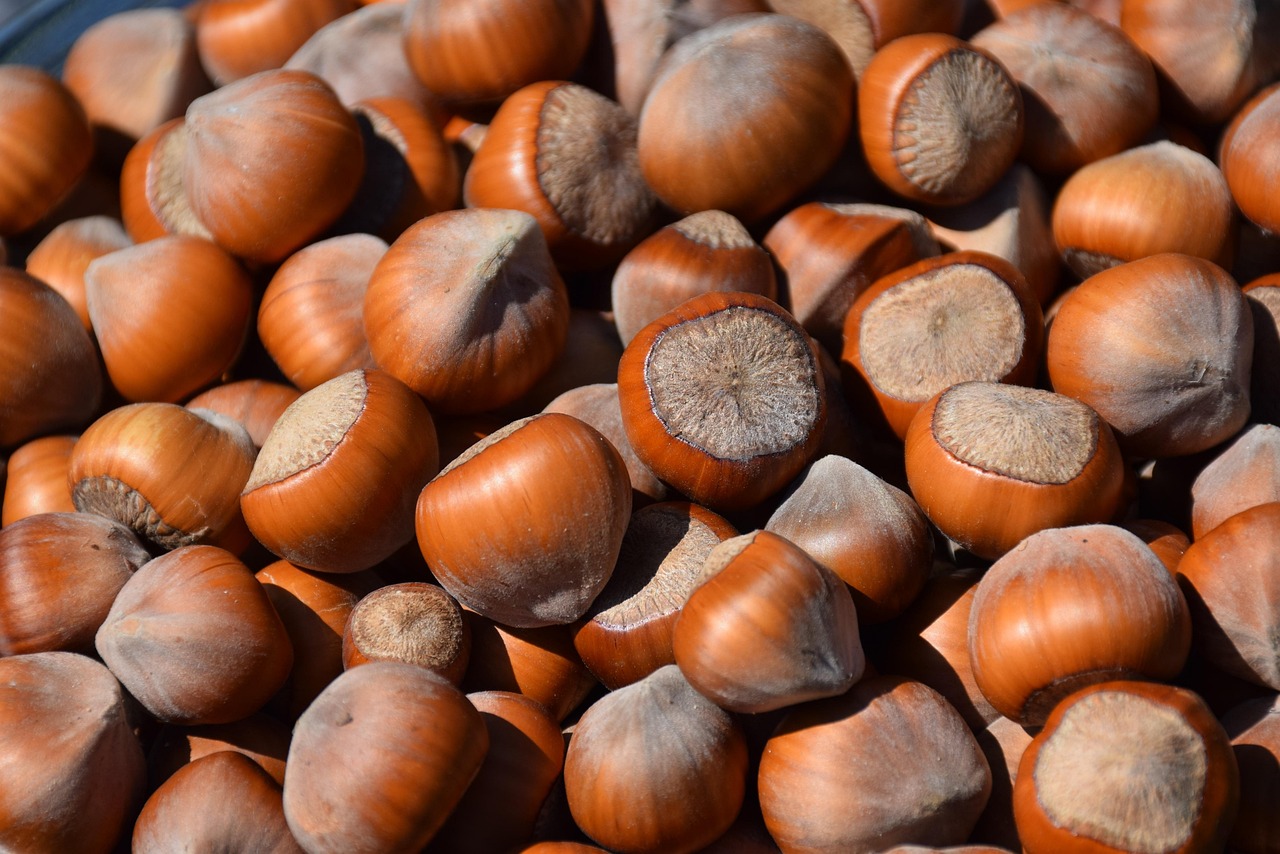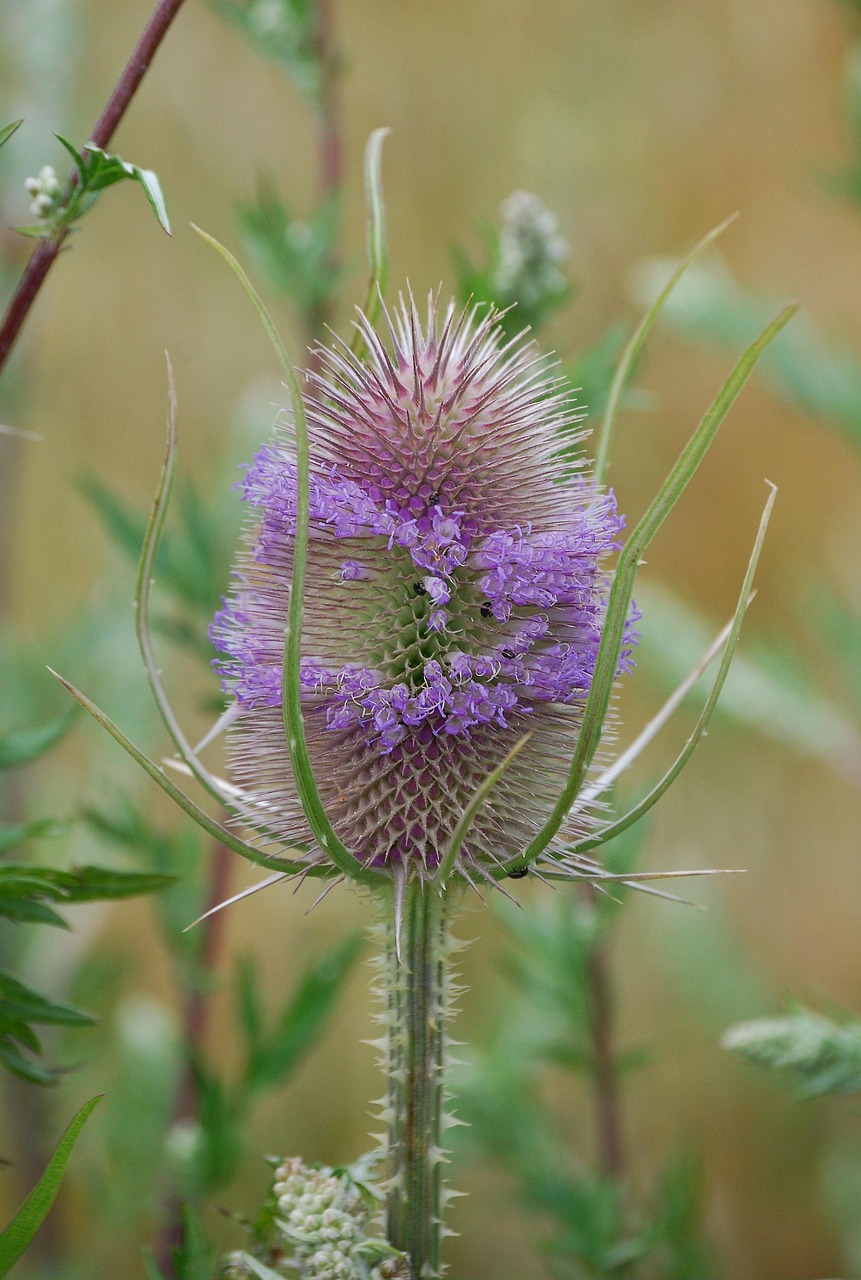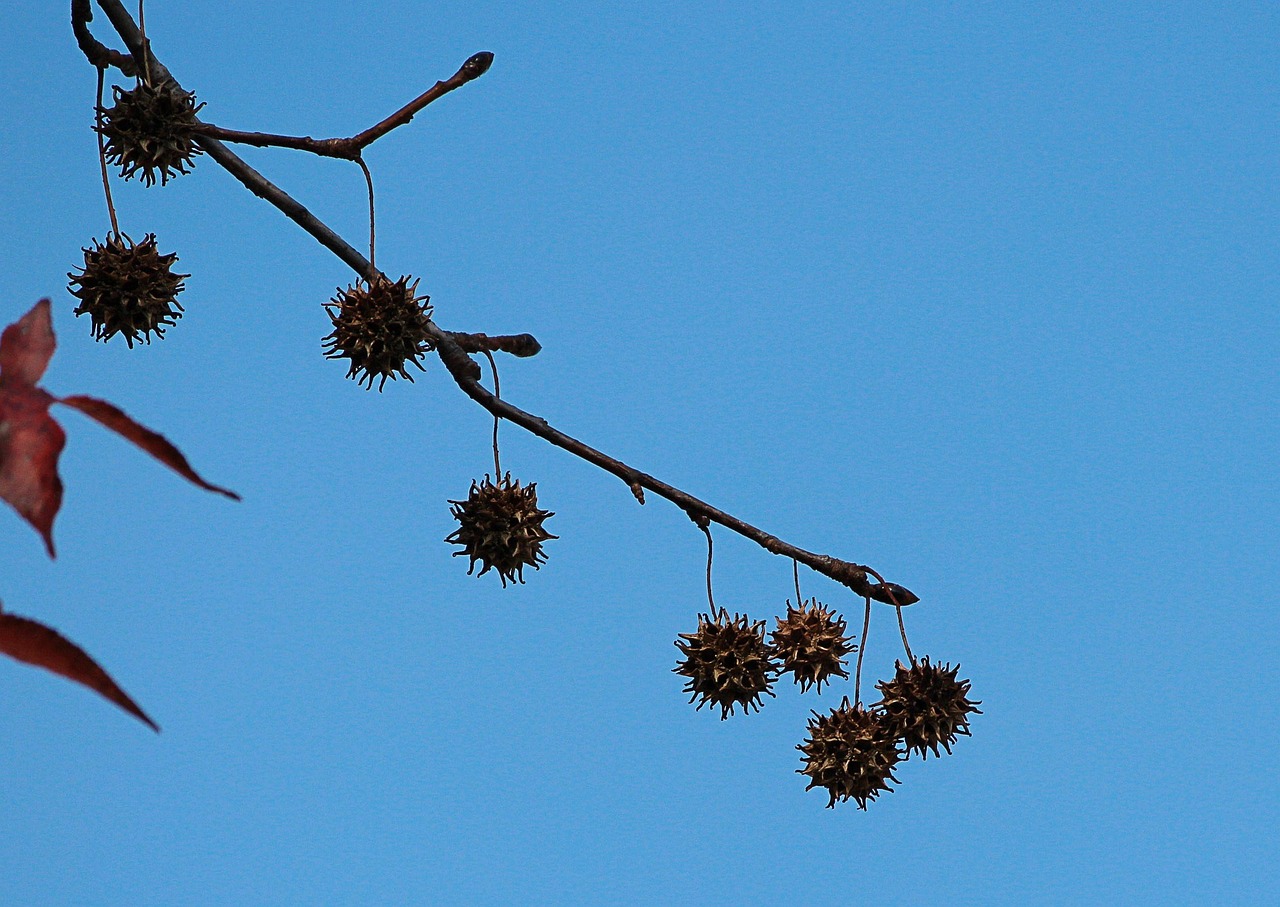Trees with spiky seed balls are nature’s intriguing wonders. These unique trees offer both aesthetic beauty and ecological importance. Their seed balls, often covered in sharp spines or prickles, serve a vital role in their reproductive strategies. Understanding these trees can enhance our appreciation for the natural world and its diverse plant life.
Seed dispersal is a crucial process for many plants, and trees that produce spiky seed balls have developed fascinating adaptations. The spiky exterior of these seed balls can deter herbivores and facilitate dispersal through various means, such as wind or animals. As a result, these trees play a significant role in their ecosystems.

Many people may not realize that several tree species fall into this category. These trees can be found in various climates around the world, each with its own unique characteristics. Some are known for their striking appearance, while others are valued for their ecological contributions.
Common Trees with Spiky Seed Balls
There are several notable trees that produce spiky seed balls. Here are some of the most recognized species:
- Honey Locust (Gleditsia triacanthos): This tree is known for its long, sharp thorns and its attractive foliage. Honey locusts produce seed pods that contain small, spiky balls.
- Sweetgum (Liquidambar styraciflua): Sweetgum trees are famous for their star-shaped leaves and their spiky seed balls that can cause a bit of discomfort when stepped on.
- Horse Chestnut (Aesculus hippocastanum): Known for its large, showy flowers, the horse chestnut tree also produces spiky seed cases that encase its shiny seeds.
- Bur Oak (Quercus macrocarpa): This oak species has acorns with a distinctive spiky cap, which helps protect the seeds from predators.
Each of these trees not only contributes to the landscape but also provides habitats for various wildlife. The spiky seed balls can attract different animals that help in the dispersal of seeds, promoting growth in new areas.
The Role of Spiky Seed Balls in Ecosystems
The spiky seed balls serve multiple purposes in their respective ecosystems. These include:
- Protection: The spikes deter animals from eating the seeds, ensuring that more seeds survive to germinate.
- Dispersal Mechanism: Some trees rely on animals to carry away the seed balls, which may get dropped at new locations where they can grow.
- Soil Enrichment: As seed balls decompose, they add organic matter to the soil, improving its fertility.
Understanding these roles emphasizes the importance of preserving these trees. In addition to their ecological benefits, they also contribute to biodiversity. Each species supports various forms of wildlife and plant life within its habitat.
In summary, trees with spiky seed balls are more than just unique plants; they are vital components of their ecosystems. The fascinating adaptations they possess not only help them thrive but also support other living organisms. As we delve deeper into the world of these prickly producers, we uncover the intricate balance of nature they help maintain.
Identifying Trees with Spiky Seed Balls

Identifying trees with spiky seed balls can be an engaging experience for nature enthusiasts. Each species exhibits unique characteristics that can help in distinguishing them from one another. Observing their leaves, growth patterns, and of course, their seed balls can provide valuable clues.
Leaf Characteristics
The leaves of these trees can vary significantly in shape, size, and color. Here are some common features to look for:
- Honey Locust: The leaves are small, fern-like, and have a bright green color that turns yellow in the fall.
- Sweetgum: This tree has star-shaped leaves that can be glossy and have pointed lobes. The leaf color changes from green to vibrant shades of red, orange, and purple in autumn.
- Horse Chestnut: The leaves are large, palmate (hand-shaped), and have a distinctive arrangement of leaflets. They turn yellow before falling in autumn.
- Bur Oak: Its leaves are lobed and can grow quite large, with a characteristic rounded shape. They often turn brown during the colder months.
Growth Patterns and Tree Structure
The growth patterns of these trees also provide important identification markers. Consider the following:
- Honey Locust: Typically grows tall with a broad canopy. It has a somewhat irregular shape and can reach heights of up to 100 feet.
- Sweetgum: Known for its straight trunk and pyramidal shape, this tree can grow between 60 to 100 feet tall.
- Horse Chestnut: This tree has a rounded crown and can grow to about 40–75 feet in height. Its robust structure makes it a popular ornamental choice.
- Bur Oak: Known for its rugged bark and wide-spreading branches, this oak can reach heights of up to 80 feet.
The Lifecycle of Spiky Seed Balls

The lifecycle of spiky seed balls is a fascinating process that highlights the incredible adaptations these trees have developed. It begins with flowering, followed by the production of seed balls, and ultimately leads to germination.
Flowering Stage
The flowering stage varies among species. For instance:
- Honey Locust: Produces small, fragrant flowers in the spring, which attract pollinators like bees.
- Sweetgum: Has inconspicuous flowers that bloom before the leaves appear, showcasing its unique reproductive strategy.
Seed Ball Formation
After the flowering stage, seed balls begin to form. The structure and appearance differ from tree to tree:
- Honey Locust: Seed pods develop with multiple seeds inside, surrounded by spiky structures.
- Sweetgum: Produces distinctive round seed balls covered in spikes that fall to the ground when mature.
Germination Process
The germination process varies based on environmental conditions. Factors such as soil quality, moisture, and temperature all play a role in whether the seeds successfully sprout. The spiky nature of the seed balls may help protect them from animals during this vulnerable period.

This lifecycle demonstrates not only the resilience of these trees but also their adaptability to different environments. Understanding this process allows us to appreciate the complexities involved in their reproduction and survival.
Ecological Importance of Spiky Seed Balls
The ecological importance of trees with spiky seed balls extends beyond their unique appearance. These trees contribute significantly to their environments in various ways, from providing habitats to enhancing soil health.
Habitat and Shelter
Trees such as the Honey Locust and Sweetgum serve as vital habitat for a variety of wildlife. The spiky seed balls and dense foliage offer shelter for birds, insects, and small mammals. Here are some specific roles they play:
- Birds: Many birds use these trees for nesting and foraging. The seeds provide a food source during different seasons.
- Mammals: Small mammals often find refuge in the dense canopies, while the spiky seed balls can attract critters like squirrels, who either eat the seeds or use them for nesting material.
- Insects: Trees with spiky seed balls often attract various insects that contribute to pollination and serve as a food source for other wildlife.
Soil Health and Nutrient Cycling
The decomposition of spiky seed balls contributes to nutrient cycling in the ecosystem. As these seed balls break down, they release organic matter into the soil, enriching it. This process supports plant growth in the area. Key aspects include:
- Organic Matter Addition: Decomposed seed balls add valuable nutrients, improving soil structure and fertility.
- Microbial Activity: The breakdown of these balls fosters a rich environment for microorganisms, which are crucial for nutrient availability to plants.
- Erosion Prevention: The presence of these trees helps stabilize soil, reducing erosion in areas prone to runoff.
Uses of Trees with Spiky Seed Balls
Beyond their ecological roles, trees with spiky seed balls have various practical uses in human society. These trees offer resources that can benefit communities and industries alike.
Lumber and Wood Products
Trees like the Bur Oak and Honey Locust are valued for their durable wood. The wood is often used in construction and furniture making due to its strength and aesthetic appeal. Specific uses include:
- Furniture: The hardwood from these trees is popular for crafting high-quality furniture pieces.
- Flooring: Strong and resilient, the wood is also used in flooring applications where durability is essential.
Ornamental Uses
Many of these trees are planted for their ornamental value in landscaping. Their unique seed balls, attractive leaves, and overall structure make them popular choices in public parks and private gardens. Some benefits include:
- Aesthetic Appeal: The seasonal changes in leaf color and flower production enhance landscape beauty.
- Shade Provision: These trees provide ample shade, making outdoor spaces more enjoyable during warmer months.
Cultural Significance
In some cultures, certain trees with spiky seed balls hold symbolic meanings or are used in traditional practices. For example:
- Cultural Rituals: Some communities use the seed balls in local rituals or crafts.
- Medicinal Uses: Certain species may have parts that are utilized in traditional medicine.
The multifaceted uses of these trees highlight their importance not only in nature but also in human life. Their contributions span ecological, practical, and cultural realms, emphasizing the need to preserve these incredible species.
Conservation and Future of Trees with Spiky Seed Balls
As urbanization and climate change continue to impact natural habitats, the conservation of trees with spiky seed balls becomes increasingly important. These trees not only provide ecological benefits but also cultural and economic value. Understanding how to preserve and promote these species is essential for our environment.
Threats to Survival
Several threats pose challenges to the survival of trees with spiky seed balls. Addressing these threats is crucial for their conservation:
- Deforestation: As urban areas expand, many of these trees are cut down for development, leading to habitat loss.
- Climate Change: Changes in temperature and precipitation patterns can affect the growth and reproduction of these trees.
- Pests and Diseases: Invasive species and pathogens can severely impact tree health, weakening their populations.
Conservation Efforts
To combat these threats, various conservation efforts are underway. These initiatives aim to protect existing populations and promote the planting of new trees:
- Reforestation Programs: Organizations are working on replanting native trees, including those with spiky seed balls, in their natural habitats.
- Public Awareness Campaigns: Educating communities on the importance of these trees helps garner support for their protection.
- Research and Monitoring: Ongoing research helps track the health of tree populations and understand their ecological roles.
Final Thoughts
Trees with spiky seed balls represent a vital part of our ecosystems. Their unique adaptations and contributions to biodiversity play a significant role in maintaining ecological balance. From providing habitats for wildlife to enriching soil health, these trees are invaluable.
Recognizing their aesthetic appeal and cultural significance adds another layer to their importance. As we continue to learn about these fascinating species, it is essential to advocate for their conservation. Protecting trees with spiky seed balls ensures that future generations can appreciate their beauty and benefits.
By fostering an understanding of these remarkable trees, we can encourage sustainable practices and support efforts aimed at preserving them. As stewards of the environment, it is our responsibility to ensure that these prickly producers thrive in a changing world.
In summary, the journey through understanding trees with spiky seed balls reveals their multifaceted roles in nature. Through education, conservation, and community involvement, we can make a positive impact on their future. Let us commit to protecting these incredible trees for the health of our planet and the enjoyment of all who encounter them.
